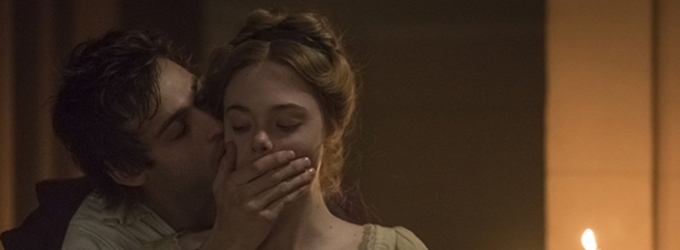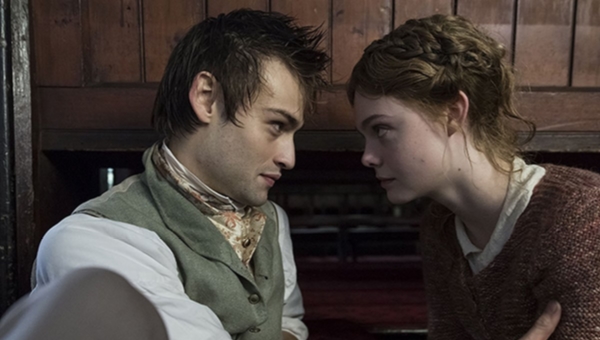There is something at work in Haifa Al-Mansour’s soul, which I do not understand. Mary Shelley, an undoubtedly fascinating woman and literary pioneer, is ripe for the modern biopic treatment. In the light of the #MeToo movement, Shelley’s travails – personal and literary – are both timeless and topical in a way that rarely aligns. A series of baffling decisions and a weak script unfortunately contribute to undermining her tale and sucking the life from it.
The film follows Shelley’s life from the point at which she meets her husband – the prodigious Percy – through to the publication of Frankenstein; or, The Modern Prometheus, via their scandalous coupling and subsequent navigation of nineteenth-century social mores, their hedonistic relationship with Byron, and the author’s increasing fascination with science that will later inspire her Gothic horror.
Elle Fanning does a good job with weak material in her lead role. The youth and naivety of the young Shelley is clear, but her emotions convey depth by hinting at a burgeoning strength of character. Much of the supporting cast undermine her, however, most notably with Douglas Booth’s Percy Shelley swanning in as if about to read One Direction lyrics in iambic pentameter. Tom Sturridge’s Lord Byron, similarly, waltzes around like he’s just come from his Adam & The Ants audition.
Douglas Booth’s Percy Shelley [swans] in as if about to read One Direction lyrics in iambic pentameter.
At one stage of the film it seems as if this may be the actual point: a portrait of a woman drawing upon inner strength to retain dignity in the face of the vainglorious, narcissistic arse-children that are the men in her life. Booth grows into the Percy role as the narrative gives him a bit more to work with than reading his poetry while assuming dominant stances and wearing dry-look gel. Sturridge’s misogynistic cruelty plays well against Bel Powley’s doe eyed naïvetés.
However, as the subtlety of Haifa Al-Mansour’s images start to wane – moving from delightfully lit wilted roses to hammy visions of the monster’s animation – the script doubles down on making sure you don’t miss the themes of the film. Mary and John Polidori spell out the allegories of the tale as if drafting the York Notes for future generations. The broader stylistic choices do not boldly reveal the hypocrisy of figures of the time, as Al-Mansour seems to have intended, but instead come across as superficial.

…the story feels co-opted, Shelley’s life wiped of her specific fascination and cultural impact in order for the film to produce a bland tale pitched to ‘inspire’…
It’s tempting to attribute this failure to Al-Mansour’s desire to convey the modern experience of being a female artist (misunderstood or rejected by the society that surrounds her), through the topicality Shelley lends herself to. This is certainly the backdrop against which WADJDA, her much more accomplished and gently handled debut, was presented. However, here the story feels co-opted, Shelley’s life wiped of her specific fascination and cultural impact in order for the film to produce a bland tale pitched to ‘inspire’ in the same limited way motivational posters do.
Al-Mansour clearly has an eye for an image, with the literal mechanics of the film and imagery – ridiculous monster vision notwithstanding – lending a visual credence the weak and forced script does not deserve. However accomplished this and her previous work may be, nothing wilts faster than laurels that have been rested upon.

